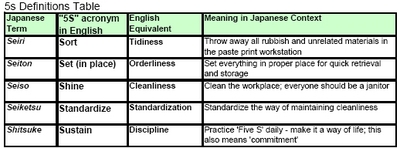A great Indium Knowledge Base question came from a customer last week for "recommendations on solder paste height versus component pitch..." Well, the first thing I did was go to our solder paste transfer efficiency and process guru Chris Anglin, and this is what we've come up with. Typically, it is the variation in solder paste deposits during ultra fine pitch component assembly that are measured, and the amount of variation can be observed as an indicator of defect level. The consequence of excessive variation is that ultra fine pitch defect levels tend to be most susceptible. Because there is no single answer for all applications, we must look at the customers' individual processes. Only then the upper and lower specification limits can be defined. So, our initial recommendation, therefore, institute a 5S Methodology practice at the paste print workstation to minimize the root causes for the variation in the paste deposition process. This is to recognize the amount of variation in, for example, solder paste height, eliminating the variation due to all other causes outside the actual printing process. This, by the way would make a great DOE and 6σ Green Belt project, for only through the paste measurement and number crunching in your favorite statistics program, can the variation of the paste heights be put into a number. And, we are not talking about ten boards, here... The minimum amount of boards that I usually start with is about 100 boards. Now, I know that not everyone can get 100 clean, fresh boards to test with, so I have about 20 boards that are reused, cleaning them in a commercially available stencil and board washer. It is often easy to identify root causes for variation after 5S is instituted. Some of the more common causes for variation are related to board support and squeegees. As control of these basic features of the solder paste deposition process is improved, the variation in solder paste height will be minimized, and defect levels will decrease for the ultra fine pitch components. Indium Corporation's Technical Service has some detailed reports from our Process Simulation Lab that we have done to show the typical variations in solder paste deposition across different apertures and stencil types. More information may be found at our Online Help: Indium Knowledge Base or by contacting our Chris Anglin.
Apply Now |Blog | Buy Local | Buy Online | Technical Documents | Quality | Solder Alloy Guide |



